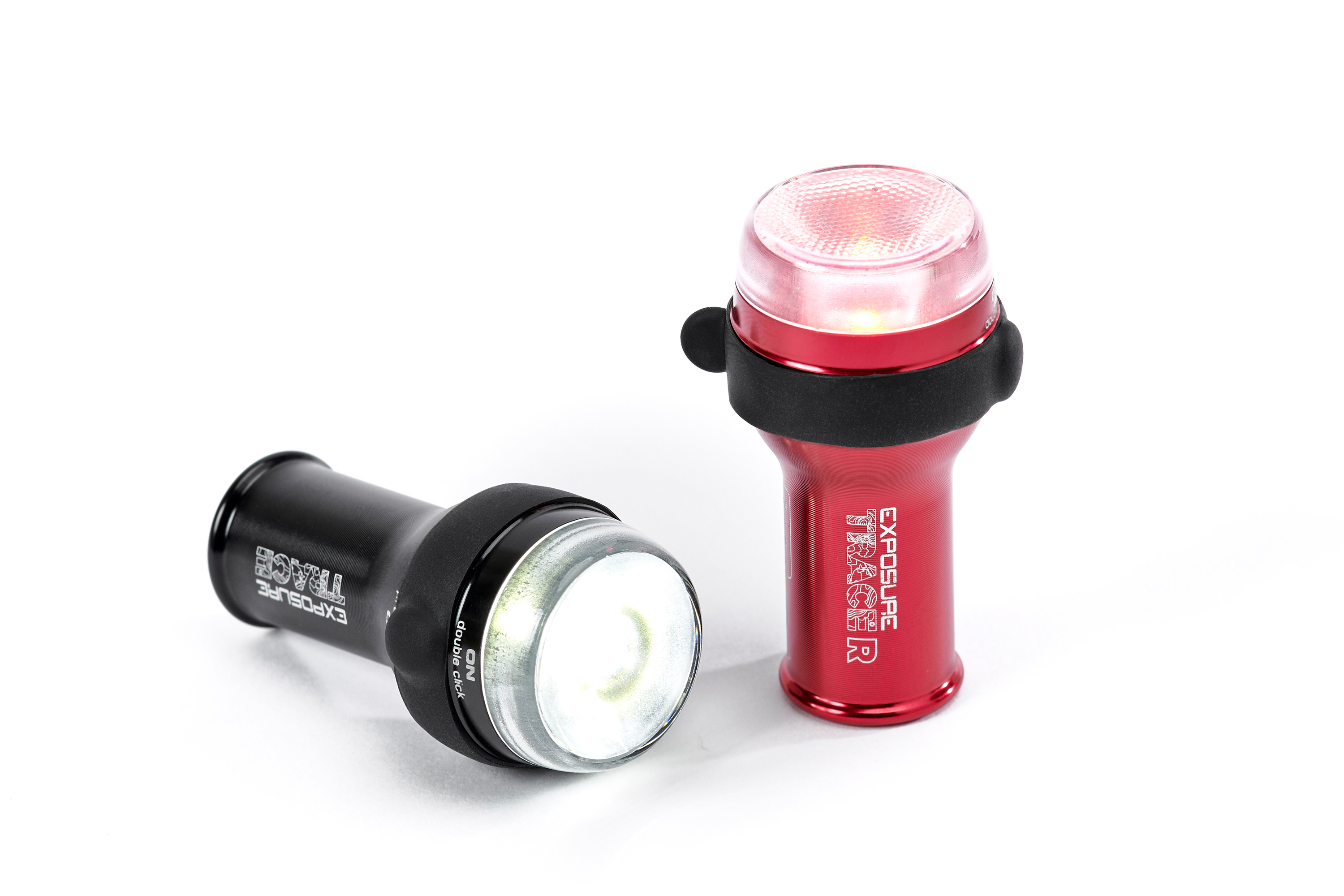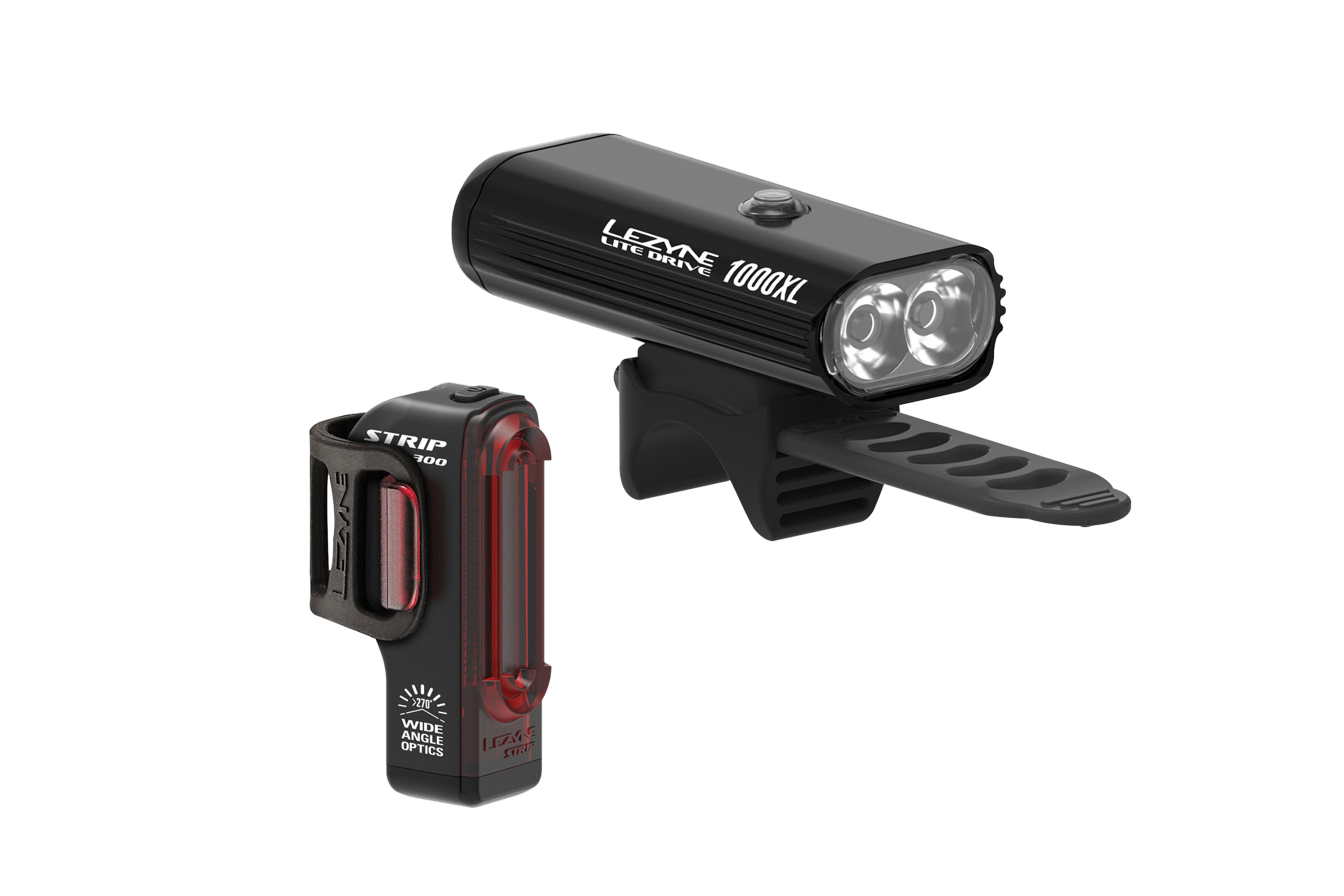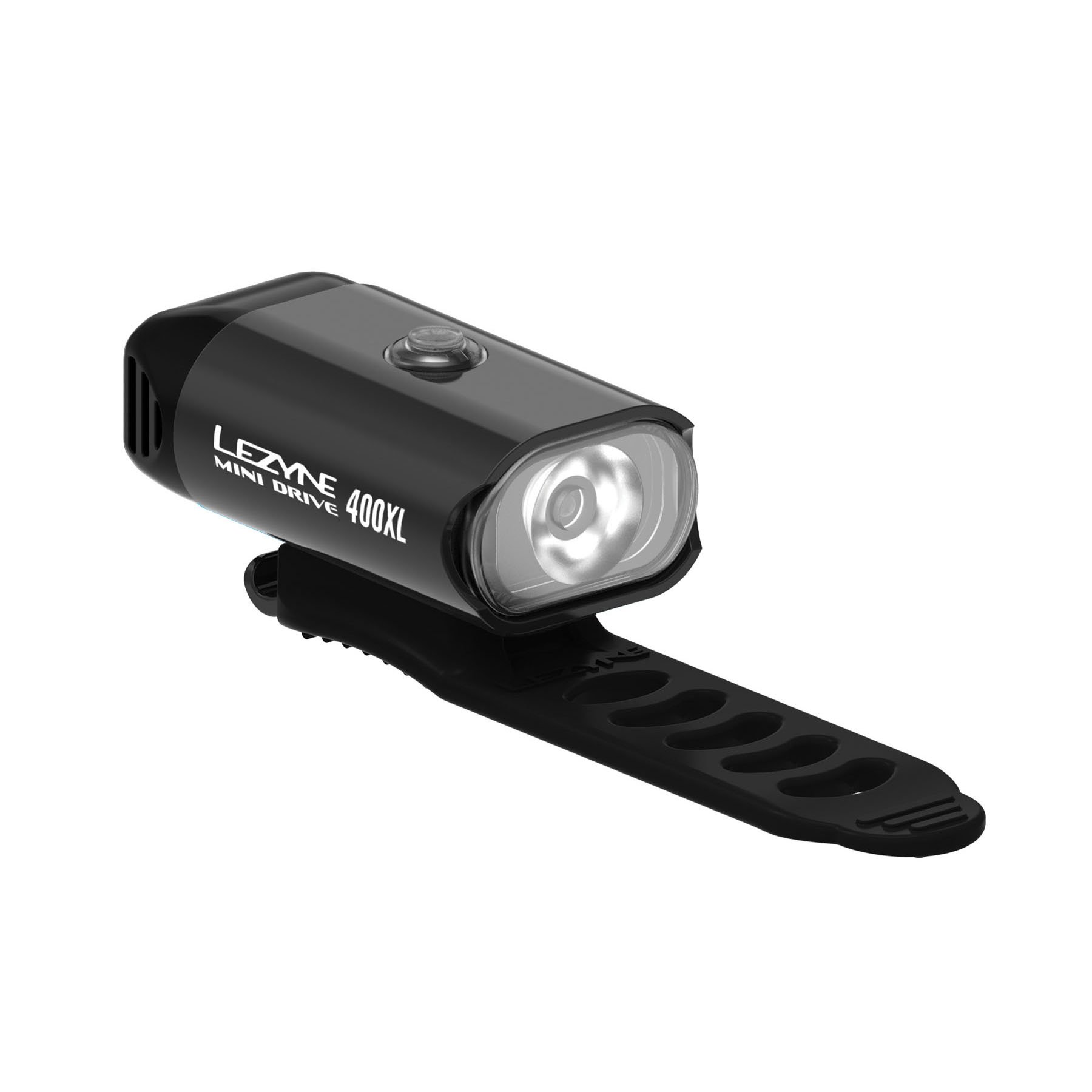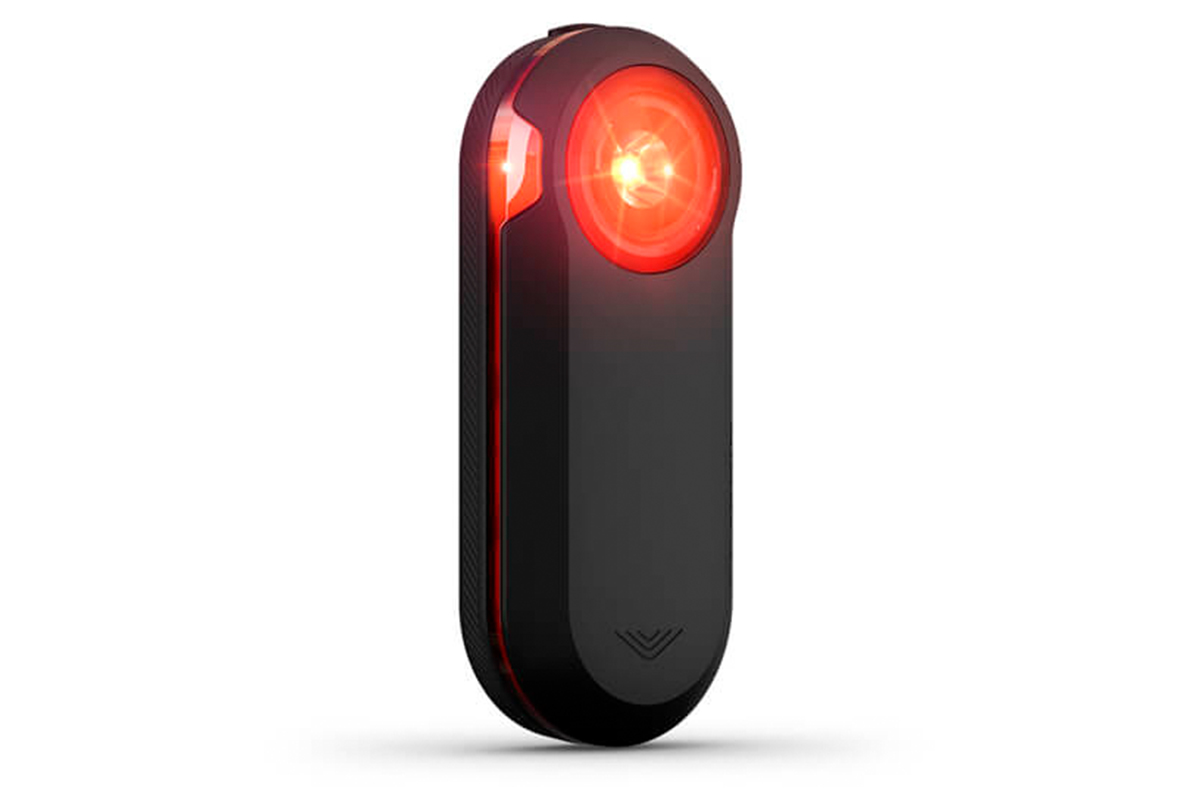Best bike lights: Options for helping you see and be seen
A good quality front and back bike light should be at the top of your list of essential bike gear. Here are some of our top picks

It’s important to own a good set of bike lights not only for dark and gloomy winter rides, but also for rides where there’s low visibility or you’re on busy roads.
Some of the best bike lights on the market will make you more visible, but vitally, they’ll also help you see the road ahead so you can avoid any hazards like potholes or gravel. In the UK and plenty of other countries, it’s illegal to cycle in the dark without a light, as you’re putting yourself and other road users in danger.
How do I choose the best bike light?
Choosing the best bike light for you depends on a few factors. Firstly, consider what kind of riding you want the light for. If you’re after a light you can use for short commutes on roads, battery life may not be as much of a priority as light strength and visibility.
If you’re looking for a light to use on long days in the saddle, then it’ll be all about battery life. In general though, the features you should look out for are: the ability to be recharged by USB, weather resistance, easy and secure attachment, durability, a solid guarantee and a good number of lumens (which will equal more brightness).
How many lumens do I need to ride a bike at night?
There’s no set standard for how many lumens your lights should have when riding in the dark. Your front light should be brighter than your back, as this needs to light your way sufficiently on the road or path you’re following.
Lights in urban areas don’t need to be as bright. As you’ll be riding under street lights, look for a minimum of 200 lumens on the front and 50 on the back.
For rural country roads without street lighting, you’ll want stronger lights of at least 400 lumens on the front and 100 on the back. It’s worth bearing in mind that lights any stronger than 800 lumens could be dangerous, as they may be bright enough to blind any bikes or vehicles travelling in the opposite direction.
Best bike light sets
Exposure Lights Trace + Tracer MK3 DayBright Light Set

220 Triathlon verdict
A fine set of lights, albeit relatively costly for commuting only Score: 81%
Pros
- Powerful compact lights
- Long run time
- Excellent visibility
Cons
- Pricey for commuting
- £84.99
This cracking set of Exposure lights punches well above their incredibly light weight. Both come in at just 35g (without mounts), though what they lack in bulk they more compensate for in illumination.
At the front, the Trace delivers up to 125 lumens in both constant and flashing modes. Depending on setting used, run time’s anywhere from 3hrs to 24hrs. Though that lumen level’s more to be seen than to see, beam pattern and visibility is exceptional.
The TraceR’s lumen max comes in at 75, and each light features the same OMS (Optimised Mode Selector) programmability that allows you to switch between three output levels depending on your needs. Side visibility on both’s impressive, too, thanks to the lens extending around 7mm out from the tough aluminium shell.
USB recharging takes less than 2hrs and you’ll know when battery’s running low thanks to Exposure’s Fuel Gauge system – essentially the LED will glow red, amber or green when you turn it off. Mounting’s simple but reliable thanks to O-rings.
Lezyne Lite Drive 1000XL and Strip Pro Pair

220 Triathlon verdict
Impressive set of lights to see or be seen Score: 82%
Pros
- Clear, powerful front beam
- Huge range of modes
- Weatherproof and solid build
Cons
- Annoying rear light mount
- £123
This robust pair of lights offers everything you need and more to ride with confidence through the winter months. Upfront, the CNC-machined alloy body’s on the heavier side but tough as old boots and clamps to all handlebars thanks to the thick silicone strap.
Eight modes range from Femto (just 15 lumens that lasts for 87hrs) to its max lumen output of 1,000 that lasts for around an hour-and-a-half. The clarity of this latter beam’s impressive, illuminating the South Gloucestershire country roads with ease and offering a good spread.
In-between are enough modes to sort your pulsing and flashing needs. Outback, we have an incredible 11 modes, from a five-lumen flash (53hrs max) to 300 lumens, lasting up to 5hrs.
The spread of the beam is again impressive thanks to its slight wraparound design, offering 270° of illumination. The only moot point of the pairing is the rear’s clamping system, which is unnecessarily fiddly. Both are USB chargeable with ports waterproofed thanks to silicone covers.
Best front bike lights
Lezyne Micro Drive 800+

220 Triathlon verdict
A smartly designed front light suitable for most types of cycling Score: 91%
Pros
- Very bright
- Great mount
- Long-lasting and fast-charging battery
Cons
- Not for dark, off-road riding
- £60 / $59.99
The Lezyne Micro Drive 800+ is a brilliant front light than excels everywhere apart from murky mountain bike trails.
It’s simple to navigate through the Micro Drive 800+’s modes and keep tabs on battery life, which seems above average for a light at this price.
The brightest setting’s 800 lumens and concentrated beam shape will guide you down unlit country lanes. There’s also a useful daylight mode.
Thanks to the rubber mount, the Lezyne Micro Drive 800+ should attach to most road bike handlebars.
Cateye AMPP 500

220 Triathlon verdict
A dependable front light for solitary night rides and more Score: 86%
Pros
- Very good beam shape
- Adjustable mount
Cons
- Micro USB port
- Waterproofing could be better
- £39.99 / $39.99
The Cateye AMPP 500 provides plenty of lumens at a competitive price and most triathletes won’t need a brighter light.
By making the most of its 500-lumen maximum output, the AMPP 500 gave me confidence to ride alone at night. The versatility of the mount means this front light will fit most handlebars.
There are few downsides to the AMPP 500. But many lights now have a higher water-resistance rating and its micro USB charging port is looking outdated.
Sigma Aura 60 USB

220 Triathlon verdict
Super simple light with tool-free mounting and lots of side visibility Score: 84%
Pros
- Won’t dazzle other road users
- Decent run-time
- Ideal for commuting
Cons
- Lacks lumens to light your way
- £49.99
I think the Sigma Aura 60 is excellent if you want something very simple for commuting or road riding that is literally plug ‘n’ play.
Sigma’s Aura 60 is stVZO-compliant, a German legal standard preventing bike light beams from dazzling.
That means it’s slightly dipped and there’s no flash mode, but I found the beam still makes you impressively visible.
This light isn’t designed to light your path, so is best suited for commutes or urban riding. The Aura 100 is a better option to see rather than be seen.
The tool-free mount just needs wrapping around your bars, and it’s a simple double tap to turn on. The design is sleek, and it weights 110g.
The unique slim cut-out on both sides runs almost the entire length of the light, providing lots of side visibility.
It charges via micro-USB, and the generous run times include 4 hours on Standard and 10 hours on Eco.
Blackburn Grid Front

220 Triathlon verdict
Very compact and dependable beam to be seen Score: 81%
Pros
- Bright for the size
- Good-value visibility
- Fits round and aero bars
Cons
- Attachment may scratch handelbar
- Won’t light your path
- £24.99 / $24.99
Blackburn’s Grid Front can be bought separately or as a set with the Grid Rear, and the front beam, like Moon’s Helixsense, mounts horizontally to your handlebars, with enough stretch in the band to fit round or aero road bars.
Totally dustproof and able to withstand downpours with an IP-65 protection rating, the Grid weighs just 37g including the mount and strap.
It’s tiny but the beam packs a punch, offering lots of brightness for its 110 lumens on High Solid mode. You’ll only get 1.5 hours of battery life here, but on Eco Flash it’s up to 20 hours.
The size and power means the Grid Front is definitely best deployed as a ‘be seen’ or secondary light, but for the money it will do either of those jobs admirably.
Like the Grid Rear, I’d prefer a soft backing to ensure my bars don’t get scratched, but this didn’t happen during my test period.
Topeak Headlux 450 USB

220 Triathlon verdict
Solid light for a solid price Score: 81%
Pros
- User-friendly
- Strong enough for urban roads
- Easy to attach
Cons
- Not suitable for unlit lanes
- £46.99
The folks at Topeak are masters at forging utilitarian products, and that no-fuss theme continues with the neat Headlux 450. The aluminium and polymer casing houses a unit that contains two white LEDS, which deliver four modes: high, 450 lumens that lasts around 90mins; middle, 270 lumens, 3hrs; low, 135 lumens, 5hrs; and blinking, 10hrs.
You switch through each via the single press of sizeable grey button on top. Now, we say ‘single’ press as many lights require a long press that, in our rudimentary way, often confuses things. A simple but effective option. The beam’s solid enough, creating an illuminated square in front of you.
It does the job, though is more for urban riding than long, dark efforts. Rubber straps provide easy and flexible bi-directional tool-free mounting and you can attach to either your bars or vented helmet.
There’s also a battery indicator atop the unit to keep you abreast of energy levels.
Giant Recon HL 1100

220 Triathlon verdict
Slightly awkward mounting, but impressive beam and battery life Score: 80%
Pros
- Mounts securely
- Bright beam
- Good run time
Cons
- Fiddly to fit and remove
- No quick-scroll button
- £79.99 / $86
Giant’s Recon HL 1100 is a powerful beam for seeing or being seen with clever features, but a simplified mount and USB-C charging would be appreciated on the next version.
It requires an Allen key to mount it to your bike, a tad fiddly but it offers a secure mounting solution.
There are bands to loop it over round or aero bars, and operation is via a big button on top.
Unlike Lezyne’s Micro Drive, there’s no way to switch between high and low beams without scrolling through the other modes, although there are only four.
The beam is more than powerful enough to ride confidently on pitch dark roads, or even trails, on the highest setting. It’s highly focused and picked out everything on the road in front of me.
There’s also a smart mode, switching from flashing to a static 500 lumen mid-mode when the sun sets.
Lezyne Mini Drive 400XL

- £35 / $34.99
220 Triathlon verdict
Great compact light for short distances Score: 80%
Pros
- Well made
- Several light settings
- Bright enough for most riding
Cons
- Short battery life in brightest mode
The Lezyne Mini Drive is a compact, 400-lumen light option. It can be charged by micro-USB and, thanks to the removable rubber backing, is waterproof too.
The Mini Drive offers ample light in mid to low visibility conditions and offers different levels of brightness and modes depending on the user’s needs.
We like the durability of this model and found the price tag very reasonable for such a quality, long-lasting piece of essential bike kit. Lezyne claims the Mini has a max run time of 20hrs, but from our experience this is only on the least bright setting. Using a full-strength beam has a much shorter run time of approximately a few hours.
Moon Helix Pro-W

220 Triathlon verdict
A sleek and compact front light that is a bit fiddly to operate Score: 78%
Pros
- Great spec
- Secure attachment
Cons
- Not light enough as a solo light
- Could be simpler to use
- £36.99 / $39.90
Moon’s Helix Pro-W has an IPX-7 waterproof rating and USB-C charging make it every inch the modern rechargeable bike light.
You also get ‘Intelligent Operation’ that means it will adjust according to the light conditions, and power off when it doesn’t detect movement (useful if you sometimes forget to turn your light off).
The Garmin-style mount holds the light very securely, and as a main beam I attached it horizontally to my bars.
In operation the Helix Pro-W is somewhat more complicated than others, because there are various different ways of pressing it to lock, unlock or change the numerous modes, but tech fans will appreciate this more than me.
Pumping out a maximum of 250 lumens via a rather small strip of light, the Helix Pro-W may be better deployed as a secondary light if you’re partial to night rides, but it’s bright enough to use in town as your main light.
Best rear bike lights
Topeak Redlite 80

220 Triathlon verdict
Visibility, run time and mounting options are all excellent Score: 94%
Pros
- Extremely bright
- Long-lasting battery
- Lots of attachments included
Cons
- Fewer modes than most lights
- £39.99
The Topeak Redlite 80 is one of the brightest rear lights on the market, but is far from the most expensive.
Aside from its excellent visibility, the Redlite 80’s trio of mounting options is a strong suit: Topeak includes attachments for round and aero seatposts and a clip for bags.
Battery life is also up there with the best bike lights. Some people might want more settings, but we applaud the simplicity.
Giant Recon TL 200 rear light

220 Triathlon verdict
Lots of lumens and mounting options in a straightforward design Score: 92%
Pros
- High lumen count
- Very good value
- Can be fitted to most bikes
Cons
- Micro USB charging
- Fairly short run time
- £34.99 / $45
Few rear lights will make you more visible than the Giant Recon TL 200, which pumps out 200 lumens in high flash mode.
At 2.5 hours, run time isn’t massive in this brightest setting, but you can get closer to 20 hours of economical usage
Whether mounted to seatposts or seat stays, the Recon TL 200 didn’t slip. It will also clip on to Giant helmets and saddle rails via a mount sold separately.
Weatherproofing also seemed to be good, but the Recon TL 200 charges via micro USB.
Topeak Redlite 30

- £24.99
220 Triathlon verdict
An ideal rear light solution for tri bikes Score 90%
Pros
- Good brightness
- Can stick to saddle
- Decent run time
Cons
- Can be accidentally turned on
- £24.99
If you need a rear light that will definitely work on modern triathlon bikes, look no further than Topeak’s Redlite 30.
The light itself, a 30-lumen beam at its most powerful with three modes, magnetically attaches to a clip with an adhesive strip on its underside, and you simply stick it under the base of your saddle.
The adhesive is strong and I was confident it wouldn’t come off during test rides, and the unit is dainty enough that you can still mount a saddle bag or rear hydration.
The light is impressively bright, you’ll get up to 30 hours out of it. Charging is via USB-C.
The touch control to turn on and off irritated me slightly because it can accidentally start up very easily, and I’d prefer a button. But otherwise, the Redlite 30 is an impressive solution for those who can’t mount a light to their seatpost.
Cateye ViZ 300

220 Triathlon verdict
Absurdly powerful, yet sensibly priced and manufactured Score: 89%
Pros
- Huge lumen output
- Reasonable cost
- Solid design
Cons
- Won’t attach to saddle rails
- Side visibility isn’t brilliant
- £39.99 / $39.95
The Cateye ViZ 300 is tied for the most powerful taillights I’ve reviewed when it comes to sheer lumens, but it’s more than just a huge blast of light.
A transparent plastic body massively increases visibility compared to lights that only omit light from the front, so side visibility is up there with the best around.
It’s very simple to use, with one big button to turn on and off and cycle through modes, and it lasts an impressive five hours on Constant up to 45 hours on Flashing.
There’s also Mode Memory, so after turning off, the light will be on your preferred setting for when you use it next.
The robust rubber strap fits any road bike seatpost and mounts vertically or horizontally, although there isn’t a saddle rail mounting option.
If you want a very bright light for your road bike, the ViZ 300 is one of my top recommendations.
Moon Zircon-R

- £22.99 / $24.99
220 Triathlon verdict
Tiny, affordable and plenty bright enough Score 88%
Pros
- Clever features
- Lots of lumens
- Great value
Cons
- Beam could be wider
At just 29g, the Zircon-R is the lighter and smaller cousin of Moon’s Helix Sense range.
It has some of the same features such as the double tap to change between flashing and constant modes (there are six in total on the Zircon-R), USC-C charging and the ‘Lock Mode’. I don’t particularly care for the latter, but it’s there to make sure you don’t accidentally turn it on.
The strap will fit round D-shaped seatposts, and behind the removable quarter-turn mount is a clip to attach it to bags, clothing etc.
The beam is on the narrow side as most of the unit is encased in rubber, but at 90 lumens on full it’s a big enough hit of light that you’ll be visible from a huge distance on open roads.
With better specs than some lights costing 50% more, the Zircon-R might just be one of the best value rear lights available.
Blackburn Grid Rear

220 Triathlon verdict
Punchy and compact rear beam that’s very easy to use Score 84%
Pros
- Bright, broad beam
- Multiple mounting options
Cons
- Fairly short run time
- Hard plastic backing
- £24.99 / $24.95
Blackburn’s Grid can be bought with a matching front light, but I think the Rear is a slightly better proposition.
Capable of emitting up to 40 lumens, it’s powerful enough to be seen from distance at day or night, and the ‘Grid’ blasts light from a wide angle so you’re seen from multiple directions.
A big button on top performs all operations and there are four modes, offering 1.5 hours on Steady to 20 hours on Eco.
There are taillights with better battery life specs, but the Grid Rear is cheaper than most others with this much brightness.
Mounting is via a stretchy rubber strap that will wrap around most non-standard road bike seatposts, and there’s a clip to attach it to bags.
I’d prefer a soft backing rather than hard plastic to ensure it doesn’t scratch seatposts, and USB-C to USB-C charging isn’t supported, meaning you need to use regular USB-A ports to charge.
Knog Blinder

- £39.99 / $44.95
220 Triathlon verdict
Very bright and compact rear light with some cool beam pattern options Score: 81%
Pros
- Very visible
- Cable-free charging
- Good battery life
Cons
- Slow charging
Knog’s Blinder is now available with funky alternative beam patterns such as a skull or peace sign.
Even with this square version you’ll still attract attention, because the Blinder blasts out 100 lumens on high. The eight modes include two steady settings, a pulse and numerous flashing options.
You’ll get 2.5 hours of battery life on Max Steady up to 55 hours on Eco-Flash, and there’s no need for cables with the built-in USB port. It’s IP67 waterproof too, so water ingress isn’t a worry.
I found the Blinder exceptionally bright, and had no doubt my visibility was increased compared to inferior rear lights.
Mounting is simple with a buckle and O-ring, and although I’m slightly weary about losing the parts, the advantage is that you could in theory use any size O-ring to fit any seatpost size.
Charge time isn’t the best at around four hours, but I didn’t find this an issue.
Moon Helix Sense 300

- £49.99 / $59.90
220 Triathlon verdict
Impressive – if not slightly overcomplicated – rear beam that is extremely bright Score 80%
Pros
- Extremely bright
- Smart sensors
Cons
- Arguably too clever
- Premium price
Moon’s Helix Sense 300 is a deluxe rear light: it’s incredibly bright, lightweight, the battery life is great (up to 70 hours), plus it mounts to all seatpost types and even saddle rails out the box.
Charging is via USB-C, but turning it on and general use might require you to consult the instruction manual.
A very long press takes the light in and out of lock mode, which prevents accidentally turning it on in storage; useful, but I’d argue slightly unnecessary.
The smart mode, which automatically switches from day flash to your chosen night mode at dusk, is a clever feature, and there’s also brake and parking sensors.
The 300 lumens high setting is almost too bright, but there are five modes to choose from in manual mode.
For big rides where you don’t need to mess with settings too much, the Helix Sense 300 is one of the most advanced taillights around.
Garmin Varia RTL515

- £169.99 / $199.99
220 Triathlon verdict
Cutting-edge technology, though expensive and for very specific scenarios Score: 78%
Pros
- Detects approaching traffic
- Works well as a light
Cons
- High price
- Distracting in town
Yes, you read that correctly – a penny under £170 for a rear light. But this 71g number from Garmin’s more than a light. Within the hard plastic casing’s a radar that’s designed to alert you of vehicles approaching from the rear.
Nearly, the sensor can pick up cars, mopeds, vans… from up to 140m away that sends a signal to your Garmin Edge bike computer. Or, in our case, a Wahoo Bolt that’s offered Varia compatibility since 2020.
In both cases, the outer edges of the display flows from green to dark red depending on vehicle distance. If you have neither, there’s a neat smartphone app that does similar.
Overall, the safety idea’s great, albeit for very specific situations; in other words, when you’re out of the city. Urban rides become a flashing barnstorm of red, so almost redundant.
Long, dark country rides, however, are different and much more beneficial. As for the light itself, there are four modes with peak lumens at a flashing 65. There’s also a ‘peloton’ option if you’re riding with others. Again, it’s USB charging.
How we tested the best bike lights
We submitted these bike lights to thorough testing by riding them in different light conditions and in different modes. This helped us assess their visibility, run time and ease of operation.
We attached the front lights to round and aero handlebars, and the rear lights to round and aero seatposts to evaluate their mounts and attachments.
Although it’s hard to determine a bike light’s build quality in the time available for testing, we considered factors such as waterproof rating in our scores.
We also took into account value for money.






